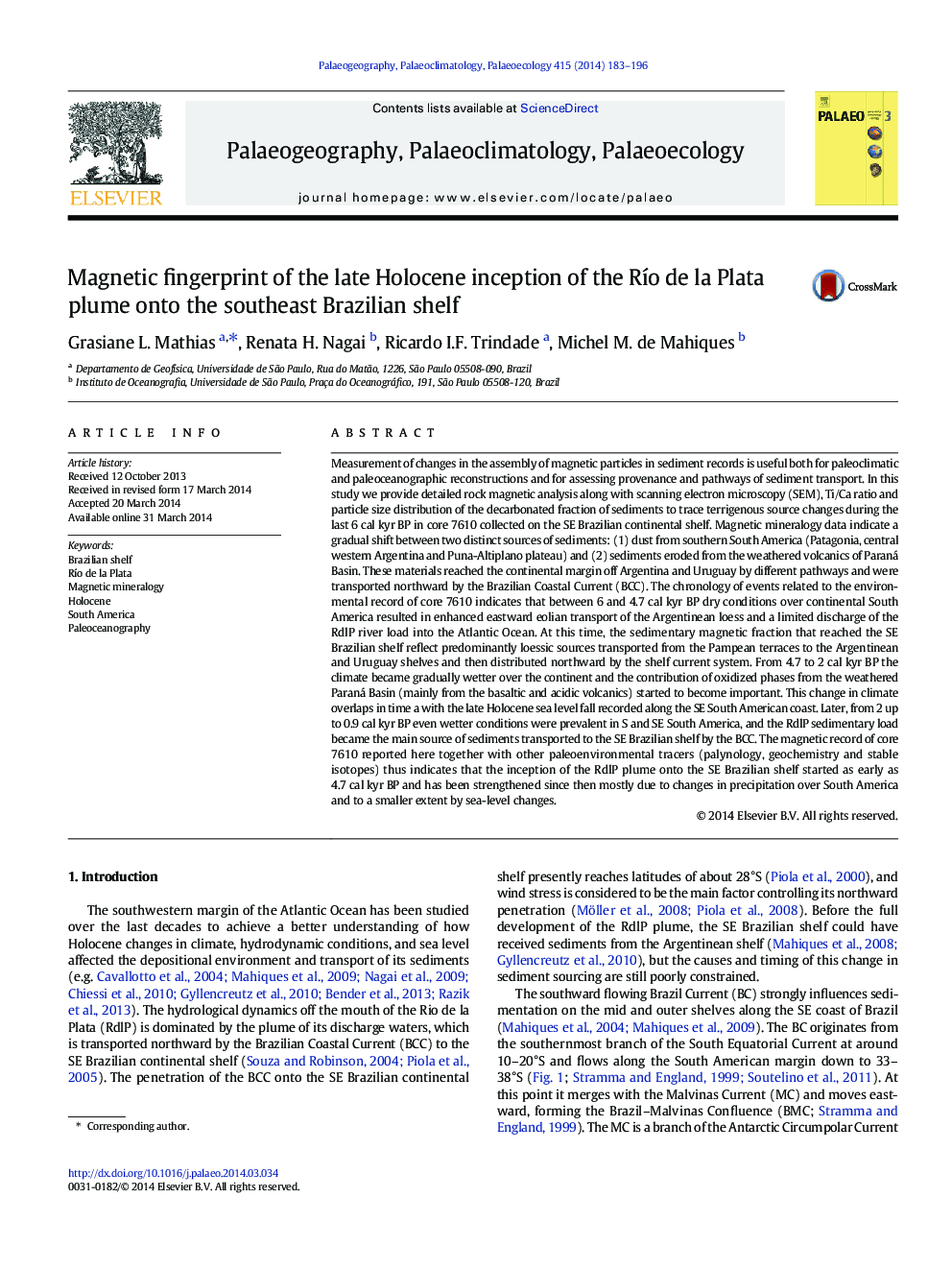| کد مقاله | کد نشریه | سال انتشار | مقاله انگلیسی | نسخه تمام متن |
|---|---|---|---|---|
| 4466176 | 1622175 | 2014 | 14 صفحه PDF | دانلود رایگان |

• Rock magnetism tracks changes in sediment sources at SE Brazilian continental shelf in the past 6 ka;
• Two sources of sediments were identified - Argentinean loess and weathered basalts of Paraná Basin;
• Sediment supply to the SE Brazilian shelf is mainly controlled by rainfall in Paraná drainage basin.
Measurement of changes in the assembly of magnetic particles in sediment records is useful both for paleoclimatic and paleoceanographic reconstructions and for assessing provenance and pathways of sediment transport. In this study we provide detailed rock magnetic analysis along with scanning electron microscopy (SEM), Ti/Ca ratio and particle size distribution of the decarbonated fraction of sediments to trace terrigenous source changes during the last 6 cal kyr BP in core 7610 collected on the SE Brazilian continental shelf. Magnetic mineralogy data indicate a gradual shift between two distinct sources of sediments: (1) dust from southern South America (Patagonia, central western Argentina and Puna-Altiplano plateau) and (2) sediments eroded from the weathered volcanics of Paraná Basin. These materials reached the continental margin off Argentina and Uruguay by different pathways and were transported northward by the Brazilian Coastal Current (BCC). The chronology of events related to the environmental record of core 7610 indicates that between 6 and 4.7 cal kyr BP dry conditions over continental South America resulted in enhanced eastward eolian transport of the Argentinean loess and a limited discharge of the RdlP river load into the Atlantic Ocean. At this time, the sedimentary magnetic fraction that reached the SE Brazilian shelf reflect predominantly loessic sources transported from the Pampean terraces to the Argentinean and Uruguay shelves and then distributed northward by the shelf current system. From 4.7 to 2 cal kyr BP the climate became gradually wetter over the continent and the contribution of oxidized phases from the weathered Paraná Basin (mainly from the basaltic and acidic volcanics) started to become important. This change in climate overlaps in time a with the late Holocene sea level fall recorded along the SE South American coast. Later, from 2 up to 0.9 cal kyr BP even wetter conditions were prevalent in S and SE South America, and the RdlP sedimentary load became the main source of sediments transported to the SE Brazilian shelf by the BCC. The magnetic record of core 7610 reported here together with other paleoenvironmental tracers (palynology, geochemistry and stable isotopes) thus indicates that the inception of the RdlP plume onto the SE Brazilian shelf started as early as 4.7 cal kyr BP and has been strengthened since then mostly due to changes in precipitation over South America and to a smaller extent by sea-level changes.
Journal: Palaeogeography, Palaeoclimatology, Palaeoecology - Volume 415, 1 December 2014, Pages 183–196